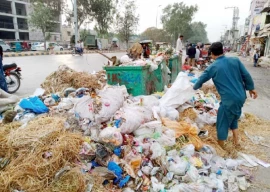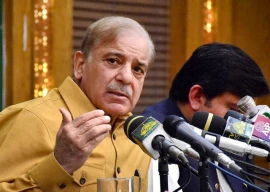
Energy consumption continues to witness a consecutive decline, as major consumers – like factories – have closed shop amid a high financial crisis in wake of depleting foreign exchange reserves.
The Pakistan Bureau of Statistics (PBS) reported on Thursday that the import of petroleum oils and gases dropped by 12% to $1.58 billion in December 2022 compared to $1.65 billion in the same month of the last year.
According to data from the National Electric Power Regulatory Authority (Nepra), power generation dropped almost 5% to 8,147 gigawatt/hour (GWh) in December, compared to 8,828 GWh in December 2021.
While speaking to The Express Tribune, Energy analyst Arsalan Ahmed said, “Economic activities and energy consumption both will continue to worsen going forward as the cycle of importing raw material has been badly disrupted. This has resulted in the closure of many businesses.”
Zubair Motiwala, a business community leader, told the State Bank of Pakistan (SBP) Governor Jameel Ahmad on Wednesday that the monthly power bills suggest that electricity consumption has dropped by 30-35% in the recent months, while gas consumption dropped by almost 50%. “The drop is observed mainly due to the closure of businesses amid the halt of imported raw material at Karachi ports. This is happening as banks are not clearing import payments due to a foreign exchange crisis.”
“The situation at present… is just the beginning of a worsening economic crisis in the country. The culmination of this crisis could be the worst,” said Ahmed.
Business activities have remained under the axe of the government’s administrative controls as the country’s economic managers try to avert a likely default on global payments.
“Economic activities will start improving two to three months after the IMF programme is revived and the business community is supplied with US dollars to import raw material,” he said.
A decline in the usage of petroleum products has been witnessed since the government withdrew subsidies, of over Rs1 billion a month, on petroleum products, and the increase in international oil prices was passed on to local consumers from May 2022. In addition to this, the government also imposed a petroleum development levy (PDL). These administrative measures pushed petroleum prices sky-high and axed the demand.
Data breakup
The breakup of the energy data suggests that the import of refined products like petrol, diesel and re-gasified liquefied natural gas (RLNG) continued to remain low in the first half (Jul-Dec) of FY2023, while the import of crude oil was up in the period.
The import of petrol and diesel dropped 28% to $650 million in December compared to $900 million in December 2021, as local refineries managed to give comparatively increased output. Increased output at refineries is also attributed to a surge in the import of crude oil by 42% to $503 million in December 2022 compared to $354 million in the same month of the previous year.
The import of RLNG dropped by 24% to $365 million in the month, as the government avoided making purchases from the global spot market, compared to $480 million in December 2021.
In the past four to five months, since the beginning of the Russia-Ukraine war, the government stopped buying RLNG from the global spot market as its price spiked to $45-50 per mmbtu compared to $20-25 per mmbtu earlier.
“RLNG imports, however, may increase from this month or the next, as the government has recently invited tenders,” cautioned Ahmed.
Nuclear power spikes
While power generation has declined overall by 5% in December, surprisingly, nuclear has emerged to be the single largest source of power generation in the month for the first time in Pakistan’s history.
The share of nuclear power shot to 27% in the energy mix in December compared to 17.5% in the same month of the previous year. Hydel power became the second-largest reliable source of energy in the month. Its share stood at 20.4% in the month compared to 20% in the same month of the previous year.
Coal came on at number three as its share in the energy mix dropped to 18% compared to 24% last year.
Production from local and imported gas was recorded at 15% and 14%, respectively, in December 2022.
Power cost cut
During December 2022, fuel cost for power generation decreased by 14.5% year-on-year to an average of Rs7.04 per unit compared to an average cost of Rs8.24 in December 2021.
The decrease in fuel cost has been witnessed mainly due to a rise in nuclear and solar-based generation along with a 14% decline year-on-year in coal-based cost of generation.
Published in The Express Tribune, January 20th, 2023.
Like Business on Facebook, follow @TribuneBiz on Twitter to stay informed and join in the conversation.






1719053250-0/BeFunky-collage-(5)1719053250-0-270x192.webp)















COMMENTS
Comments are moderated and generally will be posted if they are on-topic and not abusive.
For more information, please see our Comments FAQ